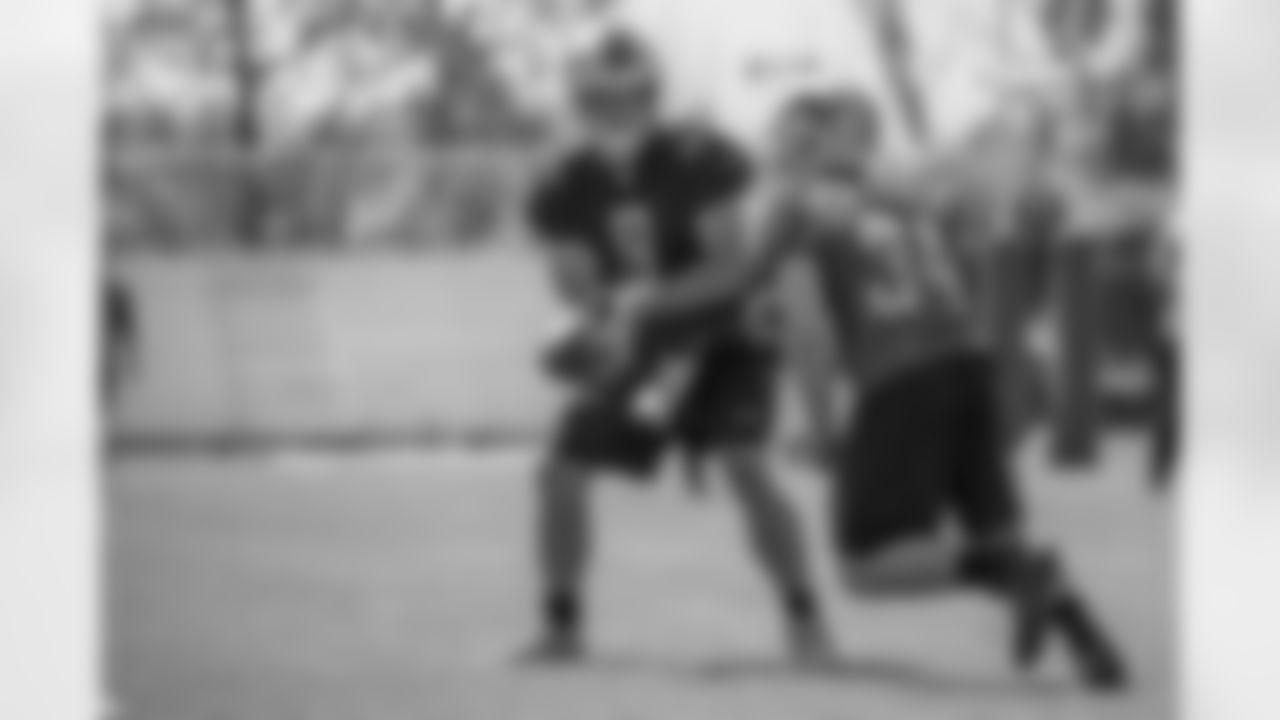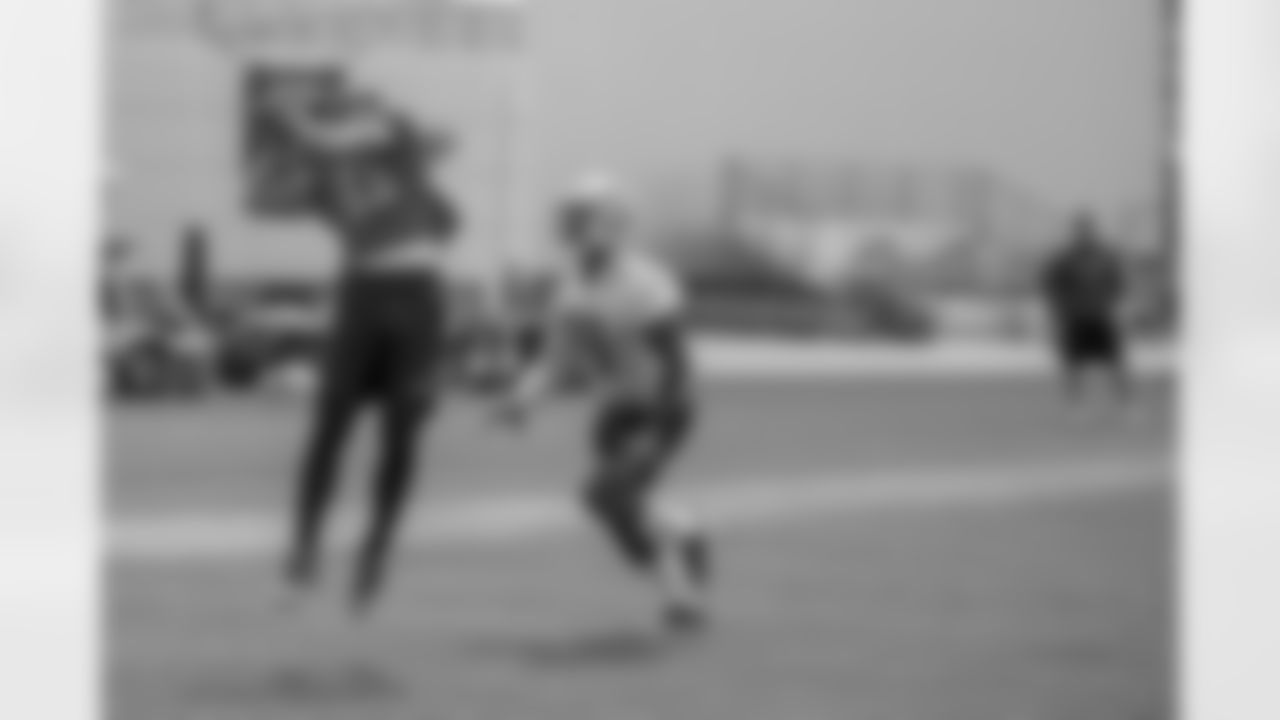My snap judgment of the Detroit Lions' 2017 draft class is that I didn't see the next Barry Sanders, Herman Moore, Calvin Johnson, Charlie Sanders, Matthew Stafford or Lem Barney in the brief media viewing of rookie minicamp.
Hold on. That's not a knock on the nine draft picks, or the undrafted free agents and tryout players who participated in the camp Friday through Sunday.
The value and personality of the NFL's entire 2017 draft class will be determined over time, as it is every year. That doesn't stop us from making snap judgments on rookies, my own included.
This week's Monday Countdown is a "reminds me of" column, not a projection of how the draft picks will perform. It is a look at how they compare to former Lions -- most of them still known to Lions fans -- who were drafted by the Lions in the same range and position as this year's class of draftees.
Some of the names or nicknames you might remember -- Spielman, Crockett and "Big Play" -- and others were lesser known role players who made an impact. The players are listed by round and overall draft position.
We start at the top -- first-round pick Jarrad Davis -- with a "reminds me of" a revered former Lion.
Linebacker Jarrad Davis, Florida: First round, 21 overall.
Reminds me of Chris Spielman: 1988, Ohio State, second round, 29 overall.
Comparison: Draft position has something to do with it. Both were passed over in favor of other linebackers. Four went off the board before the Lions took Spielman with the second pick in the second round.
Davis was the second linebacker taken, behind Haason Reddick -- 13th to Arizona. And most analysts favored Reuben Foster, who went 31st to the 49ers.
Davis and Spielman had college production and were known for their attitude and leadership.
One difference is that Spielman was drafted to play inside linebacker in a 3-4. The plan is to plan is for Davis to play the middle in a 4-3.
Bottom line: If Davis is half as good as Spielman in terms of awards and accolades, the Lions will have a defensive foundation player for a decade. Spielman made four Pro Bowls in eight seasons as a Lion.
Cornerback Teez Tabor, Florida: Second round, 53 overall.
Reminds me of Ray Crockett: 1989, Baylor, fourth round, 86 overall.
Comparison: They aren't quite the same body type. Tabor is taller and leaner at 6 feet, 201 pounds. Crockett came in at 5-10, 185. But Crockett had ultra-confidence in his ability. It was more than swagger. He took ownership of his territory on the field. Tabor seems to have the same confidence level.
Bottom line: Crockett was a role player and contributor for two seasons before becoming a full-time starter in 1991 on a Lions team that went 12-4. He had six picks that year and wound up playing 12 NFL seasons, with the first five as a Lion before departing in 1994, the year the salary-cap took effect for free agents.
Tabor might not start as a rookie, but he'll get his chance to get noticed.
Wide receiver Kenny Golladay, Northern Illinois: Third round, 96 overall.
Reminds me of Willie Green: 1990, eighth round, 194, Mississippi.
View photos from the second practice of Detroit Lions rookie minicamp.




















































Comparison: Similar body types -- both 6-4 -- and largely unheralded as rookies.
Bottom line: Green did not play as a rookie but broke in as a starter in 1991 and made immediate impact with seven TD catches in the regular season and three more in the playoffs. "Willie Green, touchdown machine," was rolling. He had 14 of his 26 career TD catches in three seasons as a Lion.
The same patience and production will serve Golladay -- and the Lions' offense -- well.
Linebacker Jalen Reeves-Maybin, Tennessee: Fourth round, 124 overall.
Reminds me of Tracy Hayworth: 1990, Tennessee, seventh round, 174 overall.
Comparison: Same school, not the same build -- Hayworth was three inches taller and 30 pounds heavier at 6-3, 260 -- but drafted for the same role.
Bottom line: Hayworth was a starter off and on and had to overcome injuries in six seasons as a Lion.
He was a quick, powerful pass-rusher off the edge who posted four sacks as a rookie in 16 games without a start. Do the same, and Reeves-Maybin will be hailed as a steal of the draft.
Tight end Michael Roberts, Toledo: Fourth round, 127 overall.
Reminds me of David Sloan: 1995, New Mexico, third round, 154 overall.
Comparison: Similar size -- Sloan came in at 6-6, 260 -- in an offense that was looking for a tight end to add scoring punch in the red zone.
Bottom line: Sloan had the speed and physical dimensions to be a scoring threat, but it wasn't until the last three of his seven seasons as a Lion that he produced. He had 13 of his 15 TD catches as a Lion in those seasons, with seven in 2001. Roberts, who had 16 TD catches for Toledo in 2016, should contribute earlier.
Cornerback Jamal Agnew, San Diego: Fifth round, 165 overall.
Reminds me of Willie Clay: 1992, Georgia Tech, eighth round, 221.
Comparison: Similar size -- Clay was 5-10, 183 -- and used his good hands to be a ball-hawking safety. Agnew is considerably faster and quicker, which suits him to play cornerback and return punts and kickoffs.
Bottom line: Clay got the nickname "Big Play Clay" because it rhymed with his name -- and he made big plays. He became a starter in 1994 and led the team in 1995 with eight interceptions, with a league-high of 173 return yards. Clay played eight pro seasons, the first four with the Lions, and had 27 interceptions his last six years.
When opportunity arose, he grabbed it and hung on.
Defensive tackle Jeremiah Ledbetter, Arkansas: Sixth round, 205 overall.
Reminds me of Anthony Zettel: 2016, Penn State, sixth round, 202.
Comparison: No need to go back further than last year to find a player with almost identical draft slot and projected position.
Bottom line: Zettel was active for 13 of 16 games and showed promise with his versatility and awareness. There's always a roster spot and playing time -- somewhere -- for that kind of player. Ledbetter will get a chance to follow Zettel's path.
Quarterback Brad Kaaya, Miami (Fla.): Sixth round, 215 overall.
Reminds me of Dan Orlovsky: 2005, Connecticut, fifth round, 145.
Comparison: Similar college resume as starters and physical stature. Orlovsky was a little bigger at 6-5, 230, compared to Kaaya at 6-4, 215.
Bottom line: Orlovsky was drafted as a development project, and he lasted 12 seasons as a backup and valuable sounding board for the Lions, Texans, Colts, Bucs and finally Lions again for the last three years. Kaaya will compete with Jake Rudock for a backup job. Any young QB drafted to play a support role early would do well to copy Orlovsky's work ethic.
Defensive end Pat O'Connor, Eastern Michigan: Seventh round, 250 overall.
Reminds me of Alfonso Boone: 2000, Mount San Antonio JC, seventh round, 253.
Comparison: Boone was somewhat heavier -- 318 pounds compared to 270 -- but he was athletic coming out of a small program. Boone lasted eight seasons in the NFL -- 2001-08 -- after not playing a game for the Lions as a rookie and moving on to the Bears and Chefs.
Bottom line: Like Zettel last year, and Boone before him, there's a place for versatile players who have the will to compete. That's why they get drafted -- first round through seventh -- and signed as undrafted free agents.













